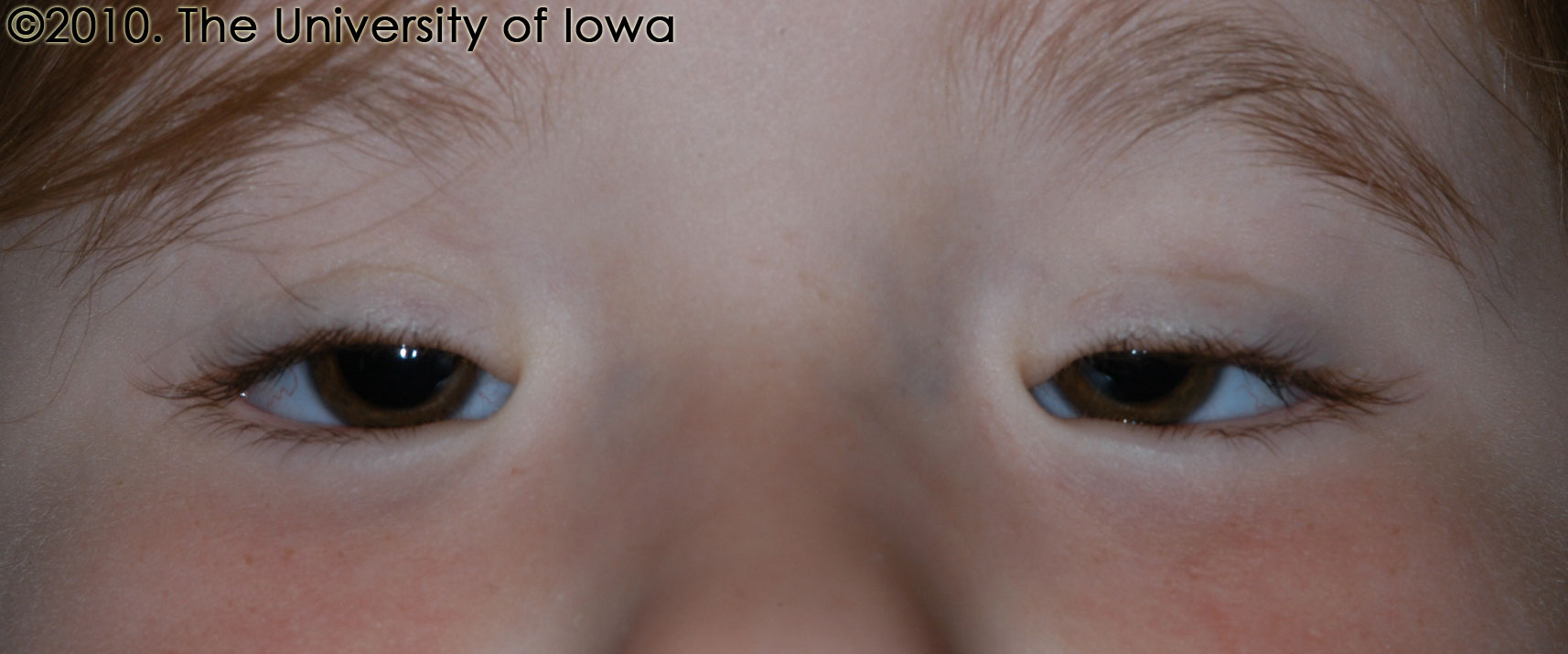Blepharophimosis
Blepharophimosis, also called blepharophimosis syndrome, in ophthalmology the name given to a very rare genetic narrowing of the palpebral fissure ( rima palpebrarum ) of the eye in the horizontal direction.
Causes
The blepharophimosis syndrome is acquired via an autosomal dominant pattern of inheritance. The corresponding gene is located on chromosome 3 gene locus q23. For a large percentage of these patients are new mutations. The affected gene is named FOXL2.
Symptoms and differentiation
The blepharophimosis syndrome is characterized by a shortening of the horizontal palpebral fissure and a vertical shortening of the Oberlidgewebes. Structurally, however, the lids are completely normal.
The clinical picture of blepharophimosis often occurs along with a " Mongolian fold " ( epicanthus medialis), the drooping of one or both eyelids (ptosis congenita ) and a long eye relief ( hypertelorism telecanthus respectively ). In such cases, one speaks of a blepharophimosis epicanthus inversus - ptosis syndrome or blepharophimosis - ptosis - epicanthus inversus - syndrome ( BPES ).
When BPES two subtypes can be distinguished:
- In type 1 comes to Lidanomalien for girls are a ovarian failure ( dysfunction in the ovaries ), in addition to an infertility ( infertility ) also causes premature menopause.
- Type 2 tends to have only the Lidanomalien.
One in every five affected by blepharophimosis syndrome patient further amblyopia ( amblyopia ) and strabismus (strabismus ) can be observed. Also, abnormalities of the tear ducts and refractive problems occur frequently.
Therapy
Surgical interventions can lead to improvements, but the results are often unsatisfactory.
First description
The symptoms of the blepharophimosis syndrome were probably first described in 1889 by P. Vignes.









